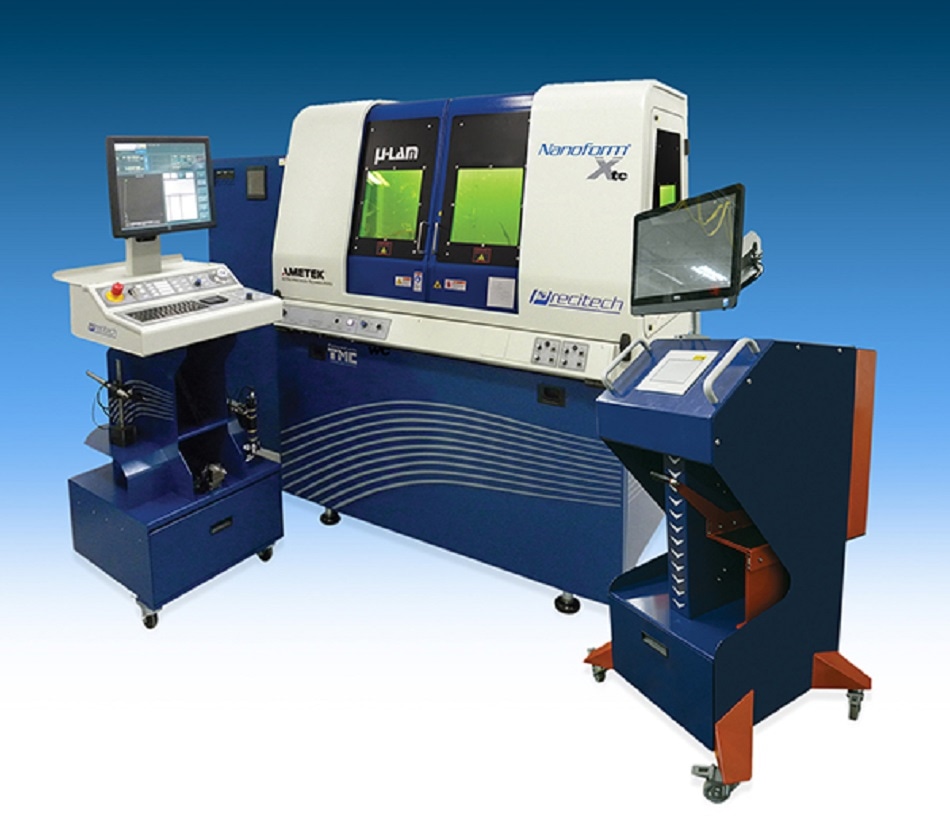
Image Credits: Ametek
Precitech, a global manufacturer of innovative ultraprecision machining solutions, introduces the Nanoform® Xtc for diamond turning tungsten carbide and other hard-to-machine materials. Micro-LAM’s Optimus T+1, a laser-assisted machining tool, along with specific characteristics of the Nanoform Xtc, enables it to perform this exclusive process.
Diamond turning has many advantages over the conventional method for grinding tungsten carbide. With demonstrated feed rates of up to 6 mm per minute, finishing a standard test part takes less than a minute. Additionally, diamond turning is a deterministic process, and well-known techniques can be used to quickly manufacture even complex diffractive (kinoform) molds and lens arrays.
Jeff Roblee, Divisional Vice President of Technologies, Precitech
Diamond turning of hard materials, such as tungsten carbide, requires the superior dynamic stiffness of dove-tail slides. The Nanoform Xtc with its exclusive dove-tail slide design can generate surfaces under 5 nm Sa and 150 nm PV. Compared to traditional grinding, a part requiring minimum post polishing can be made in minutes, instead of hours.
Optimus T+1 is an innovative solution that uses a laser beam passed through an optically transparent diamond tool. The laser is delivered precisely at the tool-workpiece interface. “The system improves part quality with a thermal softening effect that reduces the brittleness and enhances the machinability of the material. This creates a better surface finish and significantly reduces surface and subsurface damage,” states Deepak Ravindra, Founder and CEO of Micro-LAM, Inc.
The Nanoform Xtc has been tested on standard- and high-grade (binderless) tungsten carbide, and surface finish and form accuracy have been shown to be significantly improved over a ground surface. In addition to tungsten carbide, the Nanoform Xtc and the Optimus T+1 have been demonstrated effective on infrared (IR) materials such as silicon (Si), zinc sulfide (ZnS), calcium fluoride (CaF2), germanium (Ge), and zinc selenide (ZnSe).